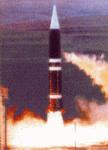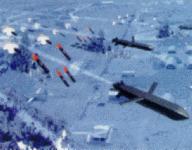
[Back]

[Index]

[Next]
National Air Intelligence Center NAIC-1031-0985-98
 [Back] |
 [Index] |
 [Next] |
Ballistic and Cruise Missile Threat National Air Intelligence Center NAIC-1031-0985-98 |

Ballistic missiles are already in widespread use and will continue to increase in number and variety. The employment of weapons of mass destruction on many ballistic missiles vastly increases the significance of this threat. Of particular concern is the acquisition of longer range missiles (MRBMs and IRBMs) by hostile regional powers such as North Korea and Iran.China has an active missile development program ranging from SRBMs to ICBMs, and its newest generation of missiles will be considerably more effective than earlier systems. While the number of deployed Russian ICBMs and SLBMs will decrease, Russia will modernize its force with advanced ICBM and SLBM systems and will retain many nuclear-armed ballistic missiles. Proliferation of land-attack cruise missiles will expand dramatically in the next decade. The number of foreign countries involved in producing these weapons will increase from two to nine. The majority of new LACMs will be very accurate,conventionally armed, and available for export. The high accuracy of many LACMs will allow them to inflict serious damage on important targets, even when the missiles are armed only with conventional warheads. US defense systems could be severely stressed by low-flying stealthy cruise missiles that can simultaneously attack a target from several directions. Ballistic and cruise missiles, with their relatively low operating costs, their high probability of penetrating existing defense systems, and their value as a symbol of national power, will continue to be the offensive weapons of choice for many nations.As such, they are threats that must be carefully considered in future military planning and operations.


 [Back] |
 [Index] |
 [Next] |
Ballistic and Cruise Missile Threat National Air Intelligence Center NAIC-1031-0985-98 |